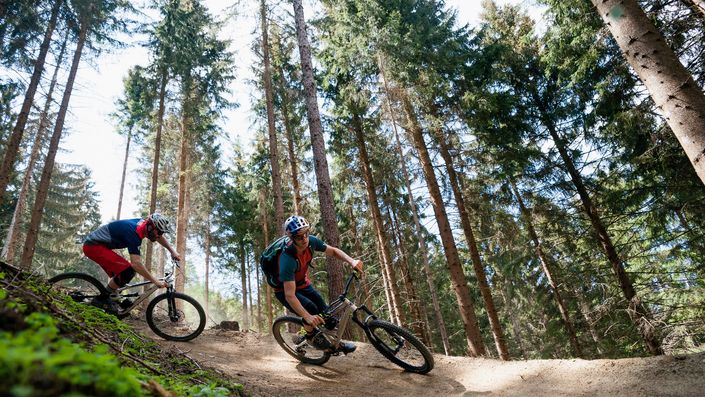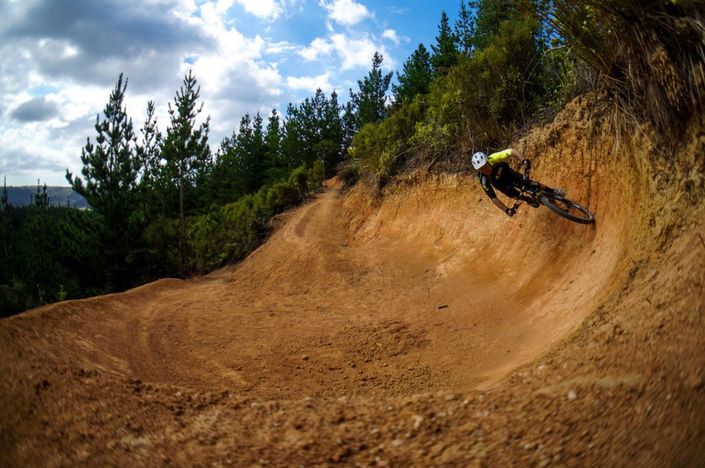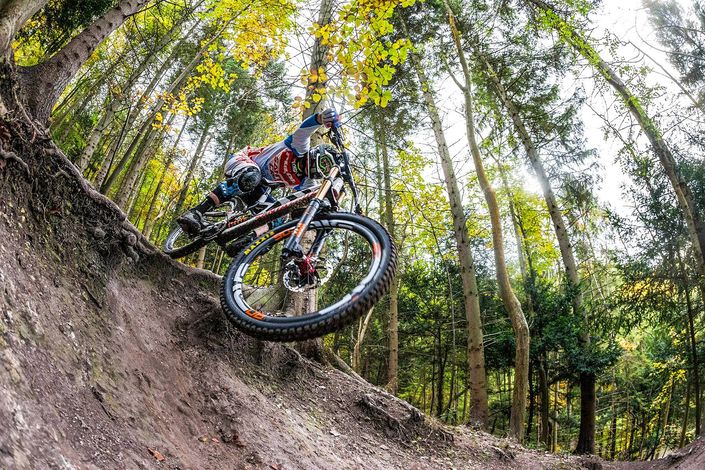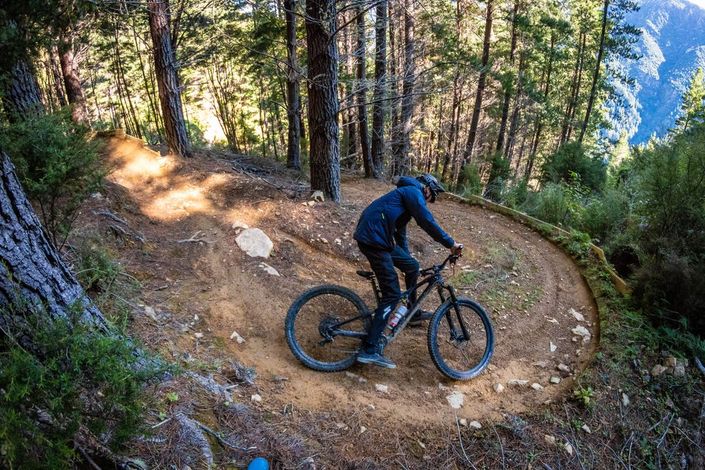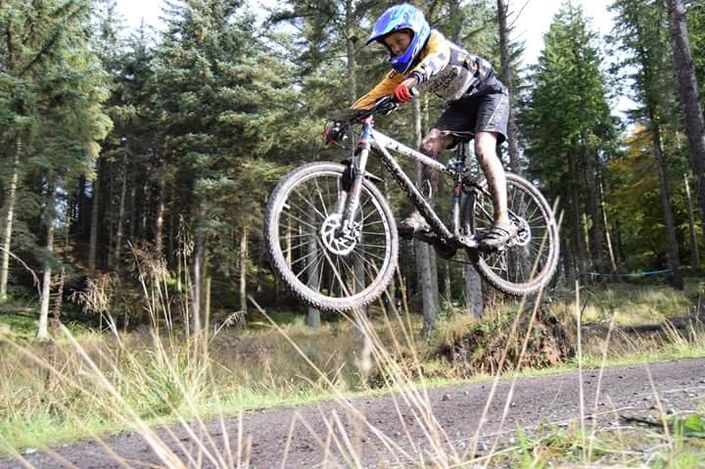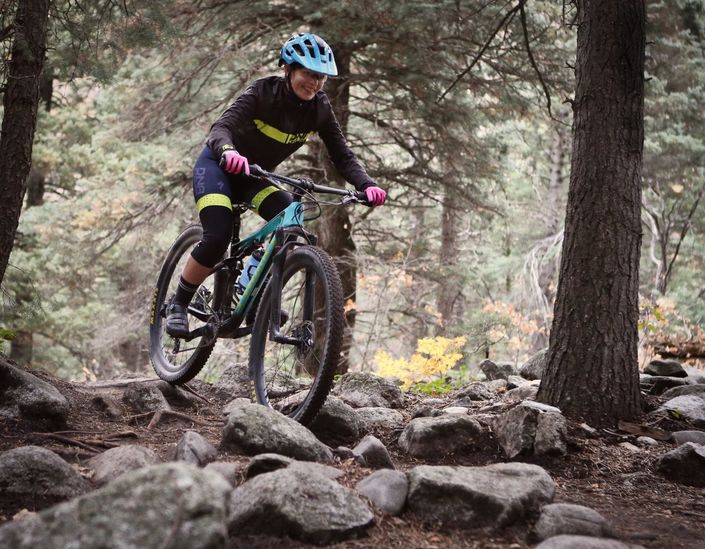If you are reading this, one can safely assume that you are already an avid mountain biker, but you are looking for ways to take your hobby to the next level. Are you looking forward to trying your hand at learning how to corner downhill, jump, and ride rock gardens? Then you came to the right place. Developing these skills will not only increase the benefits that you are already experiencing by mountain biking, but also unlock new, more exciting trails. Here are five amazing techniques to master for advanced mountain bikers.
1. Downhill Cornering
When it comes to mountain biking, cornering is one of those skills that are easy to learn, but hard to master. Downhill corners require a combination of several minor skills:
- Keeping a balanced body position. A slightly misaligned body position is fine for taking casual strolls through the woods. However, it becomes essential when it comes to pulling off more advanced techniques.
- Braking control. Knowing when to perform a soft or hard break and when to push ahead comes with experience, and that knowledge can be acquired only by riding on as many types of terrain as possible.
- Forward focus – which is a fancy way of saying "look ahead and do not get distracted."
As for the technique itself, here is what you need to do to pull it off correctly:
- Whenever you are entering downhill corners, the best approach is to slow in and fast out.
- Make sure to control your speed using both of the bikes’ brakes before taking the corner.
- Increase traction by pushing your weight against the pedals positioned level to the ground.
- Keep a balanced weight between the front and rear wheels.
- Allow the bike to move freely by keeping a loose, but controlled stance in your knees and elbows.
Check out Finding Flow: Perfect your mountain bike cornering technique for even more tips.
2. Downhill Drops
Downhill drops (and drops in general) are entirely different animals. To master them, you will have to essentially unlearn all the skills that you have acquired as a casual mountain bike rider, as it requires speed control and a tinge of confidence in one’s abilities to pull off. Here are a few tips that will make this trick easier to learn:
- Figure out the amount of speed you will need to land safely by doing a few test runs. If you are accompanied by an experienced mountain biker to assist you, even better.
- As soon as you take off, scan the area quickly for a potential landing spot.
- Once you figured out the best landing spot, try to land on it with both wheels at the same time, regardless if it is flat or inclined. When it comes to landing on inclines, even if the bike is pointed slightly downwards, you will still land with both wheels at the same time.
- Absorb the impact with your legs and arms.
Get more drop riding advice from How to ride gnarly steeps.
3. Riding on Off-Camber Trails
Once you find the stagnant position that best suits your braking, try moving your body position around in your saddle slightly. This can increase their effectiveness and well as help with grip in corners and over obstacles. The more weight you have over a brake the more grip that wheel will get, so practice swinging your body weight around while braking to see what effects what.
Generally speaking, the concept of "off-camber" refers to a type of trail that is sloped away from the direction a rider would normally take. As you might have expected, riding such trails can be very tricky. It requires a proper body posture, as well as flawless pedal placement, otherwise the rider risks ending up in the first ditch. Fortunately, like every mountain biking technique, mastering it is a matter of practicing and following the proper guidelines:
- Similar to other techniques, the key to learning off-camber trails is thinking a few steps ahead. Check for slippery roots, wet leaves, or anything that might create difficulties.
- Lean the bike toward the upslope of the trail, while keeping the body in an upright position.
- Use soft braking, and only for controlling the bike and maintaining a certain speed. Never stop the wheels from moving abruptly, as this may send the bike flying from underneath you.
4. Jumping
Now, jumping is a whole different thing, and in order to do it safely, you will need to fit your bike appropriately. That bike fitting is appropriate only for hard cyclists or professionals is one of those myths you need to stop believing. A bike that does not fit well will not only cause great discomfort but also increase the likelihood of injury, especially in the case of difficult techniques that involve jumping. Now that we got this out of the way, let us see how this technique goes:
- Start with low speed, so you will have an easier time increasing it if necessary.
- As soon as you are about to jump, push your feet against the pedals and put your body weight into the frame of the bike.
- Before approaching the edge, position the front wheel upward by extending your body upward.
- Mid-air, look for a landing stop.
- While landing, place both of the wheels on the ground and, as usual, absorb the ground impact with your arms and knees.
RELATED: Bike Fit: Does size matter?
5. How to Ride Rock Gardens
This is arguably the quintessential mountain riding technique, as virtually every material related to this sport (whether promotional or otherwise) features some variation of rock garden riding. And there is a good reason for this – tackling rock gardens can be quite intimidating to the untrained eye. However, it is not as difficult and dangerous as it looks. It all comes down to using a simple three-step system:
- Walk the line
- Find the line (meaning the path that offers the most traction or least resistance).
- Riding the line
So, let us see what exactly one needs to do to master this technique:
- The first and most important thing to keep in mind is the importance of momentum. To achieve an adequate amount of momentum, lower your center of gravity by lowering your body on the bike. At the same time, you should allow the bike to move freely underneath you, as this stance will help you quickly react to any unforeseen event.
- Put pressure on the level pedals by placing the entire weight of your body onto the heels of your feet. By doing this, you will achieve a stable stance on the bike and prevent the body’s weight from moving forward.
- The upper body should be maintained in a stable, relaxed stance for an additional level of stability.
- Using the trail finding technique mentioned above, look for an adequate entry point. However, do not focus too much – you surely do not want to crash against the first rock!
- Keep your body weight centered and move your body forward. Maintain momentum by absorbing subsequent impact with your arms and legs.
Learn more about tackling rock gardens and other technical terrain.
Conclusion
Mountain biking is just as fun practiced casually, but at some point every rider feels the need to take their game to the next level. If you are tired of just strolling through forest paths, you should consider giving these techniques a try – you will feel more confident in your riding skills than ever.
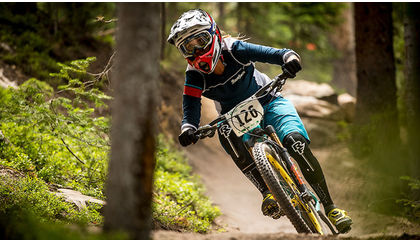
RELATED ARTICLE:
Downhill racing: Secret tips from a veteran racer
Handy and unusual preparation tips for DH racing that only a seasoned racer would know... READ MORE
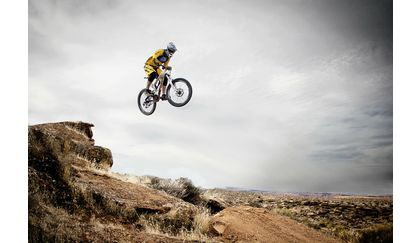
RELATED ARTICLE:
What Do Three of the World's Best Mountain Bikers Have in Common?
Three MTB pros share what they have in common to be the best. Standing atop the podium defines success and these are the things that make it possible... READ MORE
